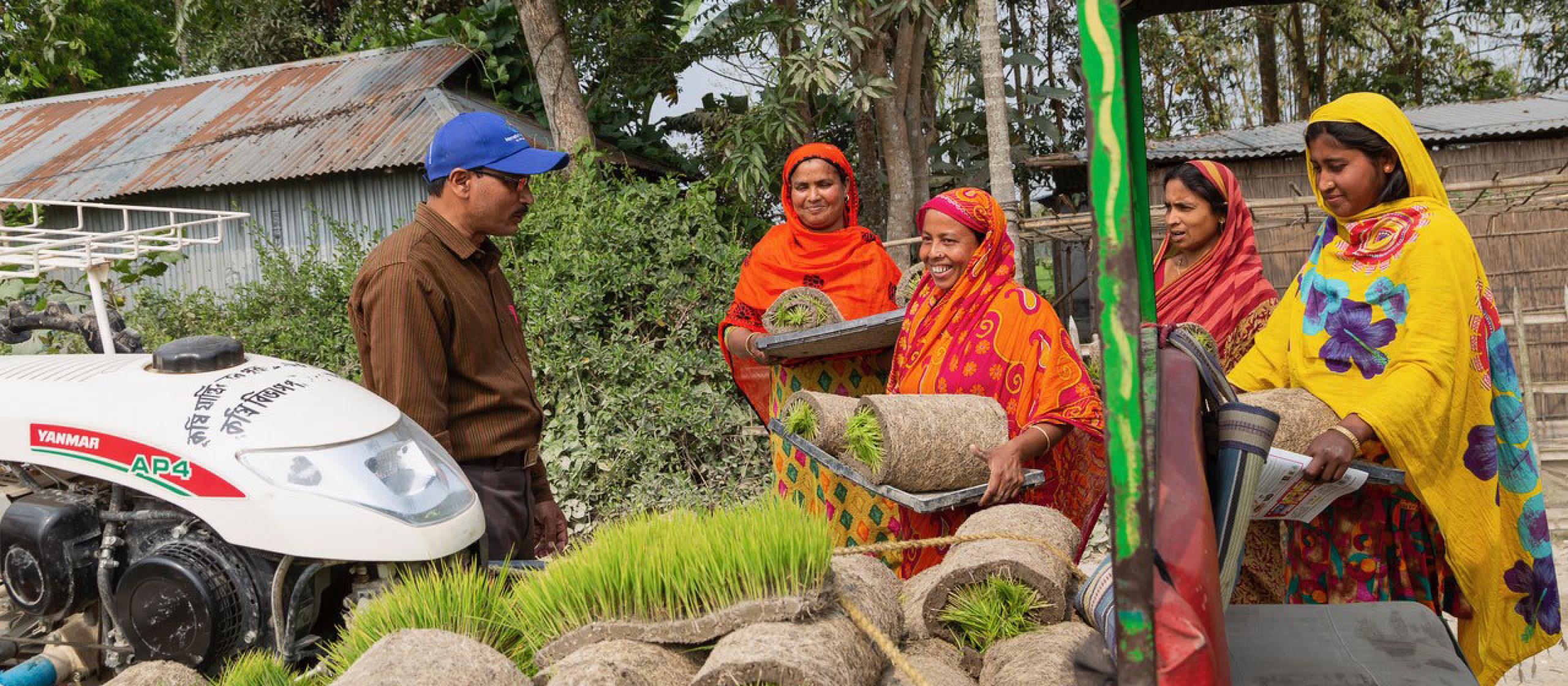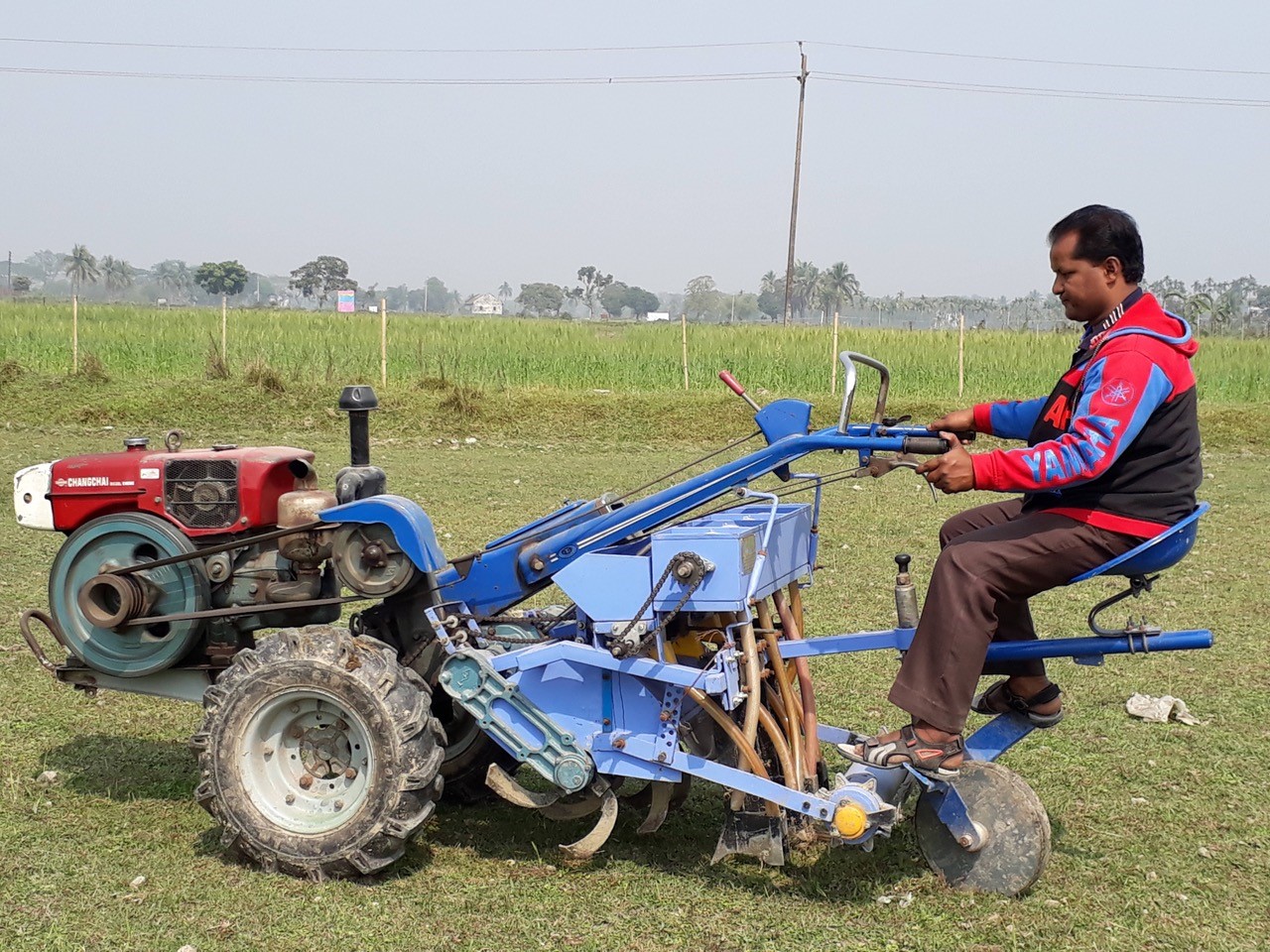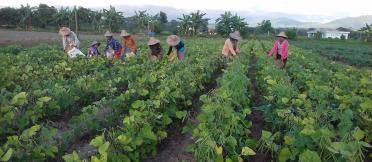- HomeHome
-
About ACIAR
- Our work
- Our people
-
Corporate information
- ACIAR Audit Committee
- Commission for International Agricultural Research
- Policy Advisory Council
- Agency reviews
- Executive remuneration disclosure
- Freedom of information (FOI)
- Gifts and benefits register
- Information publication scheme
- List of new agency files
- Contracts
- Legal services expenditure
- Privacy impact assessment register
- Commonwealth Child Safe Framework
- Benefits to Australia
- Careers
- 40 years of ACIAR
-
What we do
- Programs
- Cross-cutting areas
- Resources
- Where we work
-
Funding
- Research projects
- Fellowships
-
Scholarships
- John Allwright FellowshipScholarships to study in Australia for ACIAR partner country scientists to have Australian postgraduate qualifications
- ACIAR Pacific Agriculture Scholarships and Support and Climate Resilience Program
- Alumni Research Support Facility
- Publications
- News and Outreach
Date released
16 December 2020
It may be small but the VMP (versatile multi-crop planter)—a zero-till planter that can be adapted for different crops—is improving soils and reducing fuel, labour, seed and fertiliser costs for a group of early-adopter farmers in Bangladesh.
The planter, designed for use with a two-wheeled tractor, is being commercially made and marketed within Bangladesh with support from funding delivered through the Australian Department of Foreign Affairs and Trade’s (DFAT) Sustainable Development Investment Portfolio (SDIP) with ACIAR.
SDIP and conservation agriculture
DFAT established SDIP to help improve the management of water and energy for food production in South Asia, with a particular emphasis on empowering women. ACIAR SDIP focused on the Eastern Gangetic Plains in the area where India, Nepal and Bangladesh meet.
Farmers in these countries face many challenges, including farm-labour shortages as more people move to cities; more frequent floods and drought due to climate change; and land degradation from decades of heavy tillage and crop intensification.
Through SDIP-funded partnerships, farmers, researchers, extension staff and government officers have been introduced to conservation agriculture: an innovative, more sustainable approach to farming that has been practised in developed countries for decades.
Conservation agriculture is based on practices like zero-till planting to protect soil structure and integrity; crop-residue retention to preserve soil carbon and moisture; and crop rotation to protect soil fertility and health.
‘Non-puddling’ technology
While Australia, Brazil, the USA and other broadacre cropping countries have developed huge zero-till conservation agriculture machines for use over large areas, countries like Bangladesh—where the average family farm is 0.3 hectares—require smaller solutions.
The pioneering VMP was initially developed through an earlier ACIAR project to open up a market for small-scale conservation agriculture mechanisation. It is now being more widely promoted through a SDIP-funded research-and-private-sector partnership.
The partnership includes a Bangladesh equipment manufacturer and a bank, as well as extension staff and local service providers—entrepreneurs who purchase agricultural equipment so they can contract their services to farmers in their area.
Murdoch University’s Dr Enamul Haque, who is based in Bangladesh, is a member of the VMP development team. As he explains, intensive rice-based cropping accounts for 80% of Bangladesh’s total crop area, with farms growing two or three rice varieties and several non-rice crops—such as wheat, maize, lentils, chickpea and mustard—annually.
‘Farmers generally do two to six tills of the soil and “puddling” before they transplant rice seedlings,’ says Dr Haque. Puddling is the traditional practice of heavily tilling soil in flooded rice paddies. Over many years, this leads to the development of a hardened layer of soil known as a plough pan.
‘The use of the VMP opens the door to non-puddling technology. After the soil is flooded, the machine makes a narrow slit in the soil into which the seedlings are transplanted. The VMP can also be used to sow rice seeds directly, as in dryland cropping.
‘Our long-term trials have shown that this new way of conservation agriculture in rice-based systems reduces labour, fuel and other costs without losing yield.’
The ‘multi-crop’ features enable farmers to plant a range of crops, as the VMP can accommodate variable seed sizes and row spacing. Importantly, row-spacing adjustment can be done by the operator in the field using only a spanner.
The VMP also applies fertiliser with the seed. Its effectiveness as a ‘single pass’ planter can bring about a 50–85% saving on fuel costs.
Challenges to scale-up
Local farm-equipment manufacturer Mr Mizanul Hoque has been making the VMP commercially since 2016, partnering with the ACIAR researchers to promote it to farmers, local service providers, extension workers, financiers and government officials through demonstrations, field days, after-sales service and training, and incentives.
As of October 2020, Mr Hoque had sold 211 units. He aims to manufacture and sell more units to more local service providers.
One of those local service providers is Mr Khorshed Alam, from Bangladesh’s Panchaghar district, who purchased a VMP in 2018. He rents it out to other farmers and uses it on his own farm, where it has reduced labour, fuel and seed costs and increased crop yield and profit. He says the additional rental income has helped improve his livelihood.
For Mr Hoque, making the VMP more cost-competitive for Bangladesh farmers is complicated by the fact government subsidies are largely directed to full-tillage rice mechanisation.
Dr Richard Bell, also with Murdoch University, points out that in Australia and the USA the introduction of conservation agriculture was pushed along by government incentives to control erosion. Without government intervention, promotion of the VMP across Bangladesh relies almost solely on Hoque Corporation’s efforts.
‘Hoque Corporation saw the opportunity and has worked hard to develop the market,’ says Dr Bell. ‘We want to try to make the VMP successful to open the market so that more farmers take conservation agriculture on board.
‘What we’re doing with the VMP is part of a bigger wave of mechanisation for smallholder farmers in South Asia. So, understanding how to commercialise machinery and how to mechanise smallholder farmers is a critical and urgent question.’
Conservation agriculture in West Bengal
ACIAR-SDIP Program Manager, Dr Tamara Jackson, is part of a team that has been encouraging the adoption of conservation agriculture throughout the Indian state of West Bengal since 2012.
Through a network of stakeholders—from farming communities, an agricultural university, international research organisations, the state agriculture department and local service providers—conservation agriculture is now practised by more than 70,000 farmers.
Dr Jackson attributes this success to a number of factors, including strengthened links between UBKV (a local agricultural university), and the state extension offices; more than 200 on-farm trials; a growing network of ‘champions’ among farmer groups and local service providers; and technical support from international research organisations—in particular, the International Maize and Wheat Improvement Center.
Crucially, the demonstrations and grassroots advocacy have attracted high-level support for conservation agriculture from the West Bengal Government. It is now compulsory for new equipment hire centres to include at least one conservation agriculture machine in their portfolio, and local extension staff are able to allocate government resources to the promotion of conservation agriculture.
‘The West Bengal Government is also now establishing a Center of Excellence for Conservation Agriculture at a university in northern West Bengal,’ says Dr Jackson.
‘It takes years to get to this kind of huge change in what farmers have been doing for generations. It’s a risky thing to change your farming systems.’
Dr Jackson says the SDIP research shows conservation agriculture and mechanisation can benefit women, reducing the time spent on manual farm labour and presenting new farm income opportunities.
‘For example, in West Bengal, with mechanical rice transplanters you need to grow rice seedlings beforehand. Women are doing that in groups—they’re producing and selling those rice seedlings and making quite good money from it.
‘You get about a 30% labour reduction with conservation agriculture so women talk often about the fact they’ve saved time and they can use that to do additional income-generating activities, spend more time with their family or do all the other chores they have to do.
‘The success of this initiative is really due to the hard work of our local partners at UBKV, the farmer organisations and the state Department of Agriculture. It is their passion that has made the shift to conservation agriculture happen in West Bengal.’
ACIAR projects:
- Sustainable Development Investment Portfolio
- Commercialisation of smallholders’ CA-based planters in Bangladesh, LWR/2018/111
- Value chain and policy interventions to accelerate adoption of Happy Seeder zero tillage in rice-wheat farming systems across the Gangetic Plains, CSE/2017/101
Key points
- Bangladesh’s Hoque Corporation is manufacturing the versatile multi-crop planter, which was developed as part of an ACIAR project.
- The planter supports conservation agriculture and helps farmers manage their soil better, and it saves them fuel, seed and fertiliser costs.
- Innovative partnering with a local machinery manufacturer who is developing the market is helping the planter to reach more farmers.





